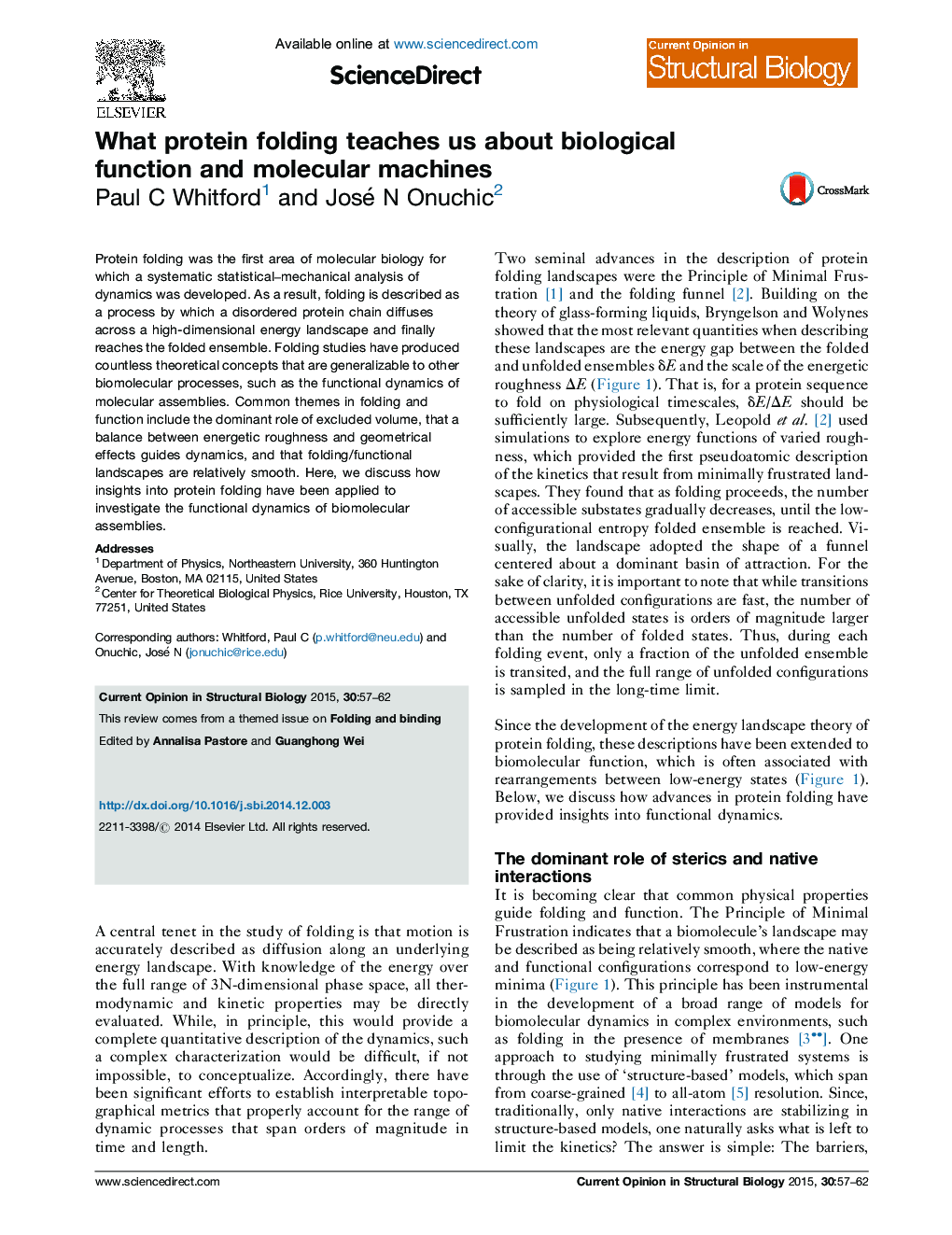| Article ID | Journal | Published Year | Pages | File Type |
|---|---|---|---|---|
| 8319993 | Current Opinion in Structural Biology | 2015 | 6 Pages |
Abstract
Protein folding was the first area of molecular biology for which a systematic statistical-mechanical analysis of dynamics was developed. As a result, folding is described as a process by which a disordered protein chain diffuses across a high-dimensional energy landscape and finally reaches the folded ensemble. Folding studies have produced countless theoretical concepts that are generalizable to other biomolecular processes, such as the functional dynamics of molecular assemblies. Common themes in folding and function include the dominant role of excluded volume, that a balance between energetic roughness and geometrical effects guides dynamics, and that folding/functional landscapes are relatively smooth. Here, we discuss how insights into protein folding have been applied to investigate the functional dynamics of biomolecular assemblies.
Related Topics
Life Sciences
Biochemistry, Genetics and Molecular Biology
Biochemistry
Authors
Paul C Whitford, José N Onuchic,
